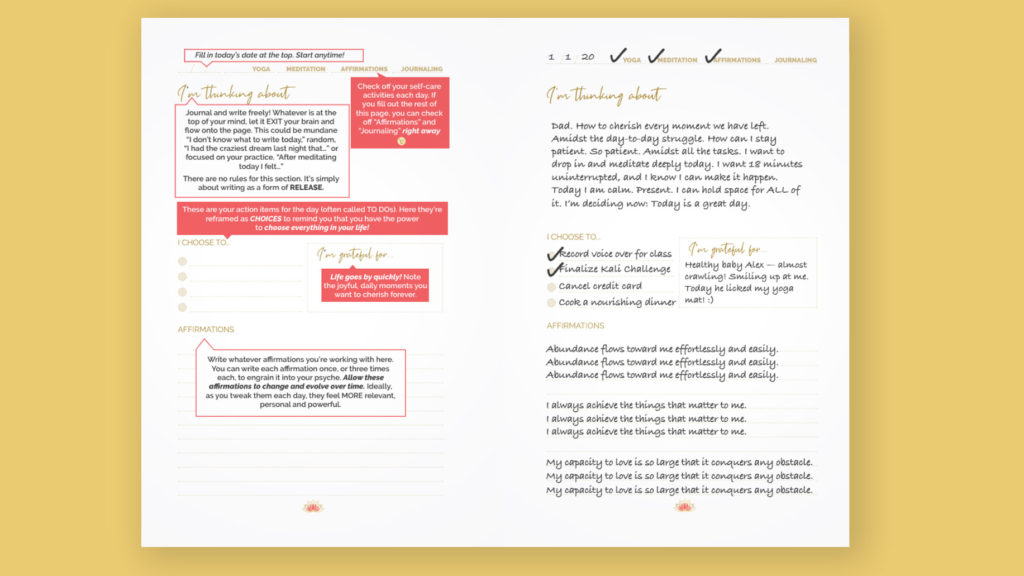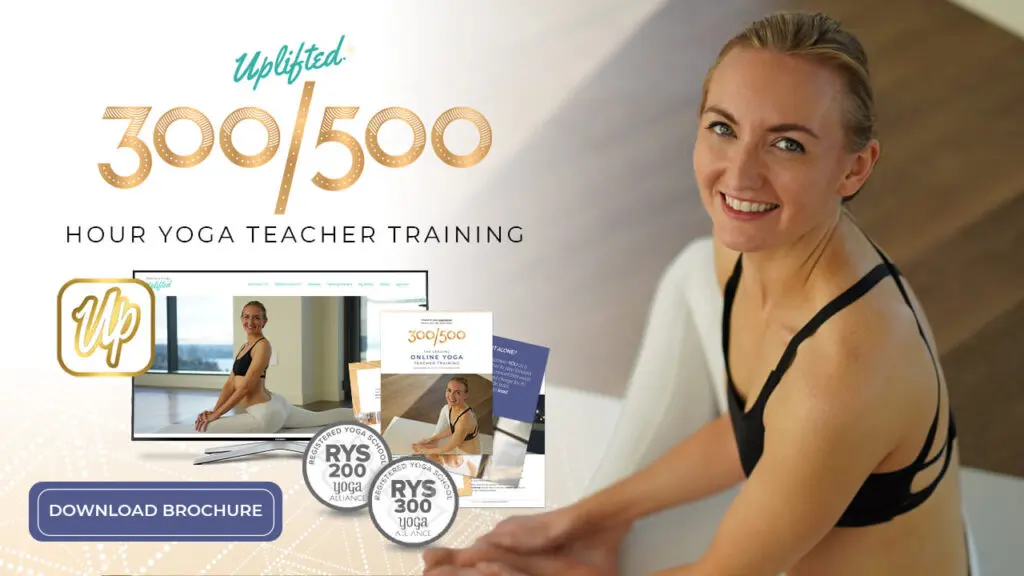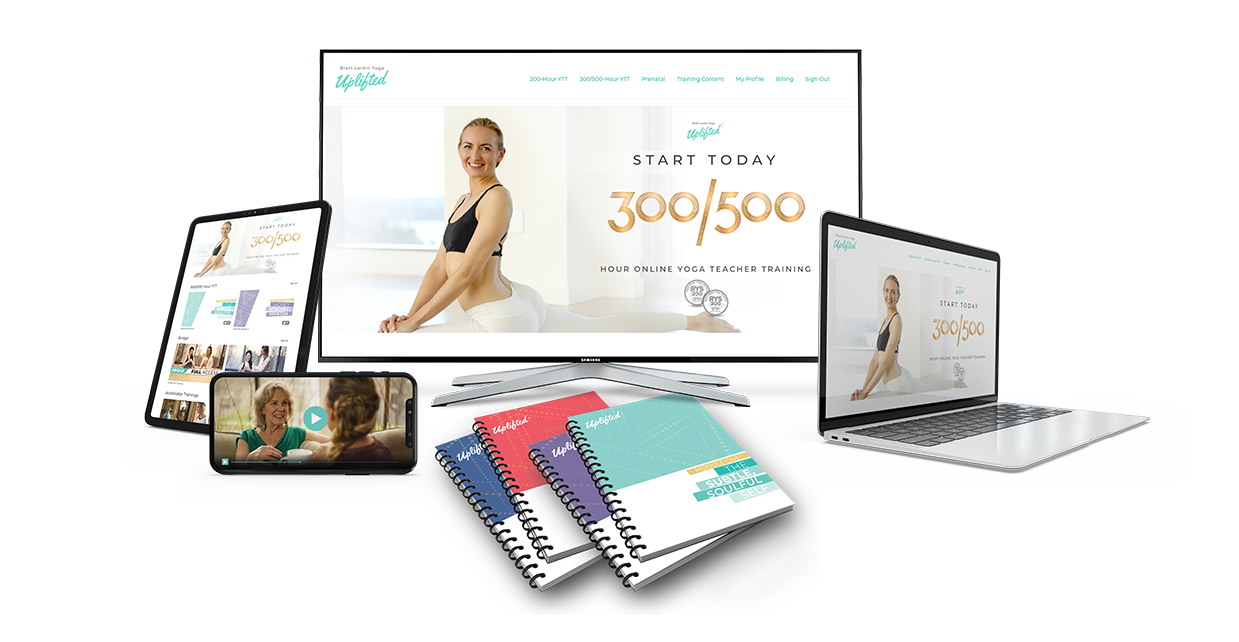
YTTs these days often appeal to students with the message that you can become a yoga instructor in under 30 days! Is that really true, though? How long does it take to be a yoga instructor – really?
Depending on your goals, becoming a teacher can take anywhere from 1 month (fresh from yoga teacher training ready to go!) to 5 years (E-RYT 200 with a successful business and a loyal following of students) – or more. Note that this timeline doesn’t touch on how long you should practice before actually signing up for YTT. That’s another story 😉
We all start somewhere, though! Whether you’re considering your first YTT or are an experienced teacher wondering what the next step is, this article is for you. Read on for the three steps that determine how long it might take you to become a yoga teacher, and check out what else you need to know about YTT before you begin.

1. Take Your Basic Yoga Teacher Training Course
Time: 1 month intensive to 12 months +
With training running from 1 intensive month to 12 months+, you can find a teacher training course to suit your schedule, availability, and budget. A 1 month intensive, is just that, intense, whilst most probably living at your yoga school. You’ll be learning and practicing at least 6 days a week, living the yogic lifestyle, and taking time away from home and everyday life. It’s kind of like a month long holiday boot camp with LOTS of yoga!
A 12 month+ course, in contrast, will be spread over weekdays or weekends, maybe with a blend of online learning, practicing at your local yoga studio, and short, immersive weekends. This type, of course, is perfect for people who can’t take a month off work or home responsibilities. I recommend choosing a Yoga Alliance-certified course, so you can take advantage of the Yoga Alliance membership benefits down the road.
2. Set Up Your Yoga Business
Time: Around 12 months
This will take you around 12 months with the goal to be earning enough to live a life where you can choose your hours. In months 1-3, make as many yoga contacts as possible and network to secure as many classes as you can.
Buil Your Yoga Business Plan
If your yoga business plan hinges on you being able to take on a ton of classes as quickly as possible, you might want to reconsider quitting your day job. It’s way less stressful and risky to transition to full-time teaching once you make a regular, stable income teaching, rather than going from 0-60 as fast as possible just to pay the bills. Once you’re balancing your budget teaching yoga (if that’s the goal!!), you can start to think about ways to make additional income from your yoga community. When you become a yoga instructor, you’ll need to have a basic knowledge of business to secure your insurance, write invoices, manage finances, send emails, and manage website and social media accounts.
Set Your Income Goals
You should go at your own pace when setting your income goals. Consider whether you’re looking for a fun job as a freelancer, or whether your dreams include owning a yoga studio, building an online yoga universe so you can teach from anywhere, or partnering with wellness and lifestyle brands to sell products through your media presence.
Most yogis go into teaching for the love of yoga, of course! This doesn’t mean you need to spend your life in poverty, with the mindset that this is a service to others. Make sure that you earn your worth. Not only do you deserve the abundance, but you will better serve others if you have addressed your own needs! If you’re entrepreneurial, lean into offering workshops and retreats. If you want a steady income, I always recommend teaching online, or focusing on freelance studio teaching, corporate yoga, and private clients.

Diversify Your Income
Teaching 10-20 yoga classes each week has become the norm “full time” schedule – which is CRAY, yogis!! Before you dive into this fast track to burn-out, think about other ways to make money in the industry. Diversifying your income is super important in order to thrive as a certified yoga teacher in the long run, and keep loving what you do!
Here are some suggestions:
- Workshops
- Retreats
- Online courses
- Online programs
- Teaching online
- Corporates
- Private 1-1 clients
- Yoga therapy
- Complimentary certifications
When you become a yoga instructor, you may want to continue learning different yoga styles, meditation techniques, and mindfulness, or pursue additional certifications in massage, bodywork, trauma-informed teaching, or other types of therapy.
3. Build Teaching Experience
Time: 12 months – 3 years
Once you come back from your yoga teacher training course, continue with your own practice as regularly as you can. With your yoga certification, set yourself up with Yoga Alliance insurance before you start teaching anywhere public. From just qualified to a full time yoga teacher, this could take between 12 months to two years.
Finding Your First Teaching Job
When you first qualify as a yoga teacher, practice teaching friends and family as soon as you can. That way you can make all the mistakes and it really doesn’t matter. Your friends and family may not be yogis, and are likely happy to support your passion. With casual experience like this, be more familiar with how bodies respond to your cues when paying students show roll out their mats in front of you.
When you feel ready to teach to a general public, there is totally an art to landing your first teaching job. You can either start by contacting studios and gyms in your local area to try to get on their cover lists or hire a space and put on your own yoga class. Most yoga studios will have cover lists, these are a great way to get as much experience as possible and get your foot in the door and also get to know other yoga instructors in your industry. Then keep your eyes open for any new opportunities!

Your teaching style will develop as you continue teaching classes and putting your teaching methodology into practice. If you want to become a great teacher (here’s my take on what separates the best teachers from the rest) and develop your teaching styles, take on a variety of classes and always continue learning. As you grow on your teaching journey and develop your teaching skills it’s important to learn more about yoga philosophy and the yoga sutras. Remember yoga isn’t just about your physical practice. When practicing yoga we must practice the 8 limbs in daily life – not just asana!
Negotiate Your Ideal Schedule
When do students like to yoga? All day, every day!! This doesn’t mean your work schedule has to be the same. Decide what days and times work best for you, and remember that you are essentially your own boss. When do YOU want to work? Are you a morning person, or an evening person? This also depends on whether you have another job or other commitments.
Many yoga teachers host weekend workshops that can earn them more money in fewer working hours, so plan your schedule around these big-ticket events.
Earn “E-RYT” Designation with Yoga-Alliance
Yoga Alliance recognizes experience with a specific credential – the “E”. When you see teachers qualified as “E-RYT 200”, or “E-RYT 500” (make sure to understand the levels of yoga teacher certification before you take a training) this means they have logged a number of teaching hours that corresponds to a full-time teaching schedule. “E” – certified teachers of any level are often highly skilled in the classroom and have mastered the art of time and energy management required to make a living as a yoga teacher. Plus, they’re committed! It takes time to build a following of students, and that can mean showing up for those little hour longs teaching gigs year in and year out for a while. You can use your credential to negotiate higher wages for your teaching time, and set higher prices for your private workshops.
And – your “E” qualifies you to be a lead teacher for a YA-certified 200-hour YTT or offer Continuing Education courses.
More experience = more earning opportunities, yogis!!
There are three requirements for earning the “E-RYT 200” qualification from Yoga Alliance:
- Complete a 200-hour teacher training with an RYS 200
- Log 1000 hours of teaching experience since completing the 200 hour training
- Teach for at least 2 years after completing your 200-hour YTT
If the average class length you teach is 75 minutes, and you teach an average of 6 classes per week following your 200 hour YTT (maybe you start out with a single volunteer class per week, then build up to eight fully paid classes over time), then it will take you 2.5 years to earn your “E” – woohoo!!
Soo…How Long Does It Take To Be A Yoga Instructor, Really?
Depending on how you roll, a good estimate is that it will take between 1 month – 5 years to get yourself set up earning a full-time living as a yoga instructor. If you’re working full time while you train, teach and build your business, this might take longer. Wherever you might be on this path, practice affirmation to refine your direction along the way, and you’ll inspire no matter where you end up ✨
Next Steps:
- Explore my Yoga Teacher Resource knowledge hub for more tips about how to grow your yoga business.
- Download my sequences for a jumpstart on your upcoming yoga classes!
- For more detailed tips, processes, and worksheets to supercharge your yoga business, download my yoga business launchpad course!

Sneak Peak into My 300-Hour YTT - FREE Videos, Info Session, Bonuses!

YOU MIGHT ALSO LIKE
- Somatic Yoga For Yoga Teachers: Everything You Need to Know in 10 Steps
- How to Teach Somatic Yoga: A Practical Guide for Instructors
- How Much to Charge for Zoom Yoga Class: A Practical Pricing Guide
- Comprehensive Guide to Your Yoga Service Agreement
- How To Create Mindful Somatic Yoga Sequences Your Students Will Love
- What Is Mindset Coaching? A Complete Breakdown
- 5 Affordable Yoga Teacher Insurance Plans (Updated 2024)
- How To Make A Life Coaching Intake Form
- 7 Steps To Start A Life Coaching Business
- What Is A Self Love Coach? And How To Become One
- Self-Coaching: How To Become Your Own Life Coach
- Types Of Life Coaches: How To Choose Your Life Coaching Niche
- 20 Awesome Ways To Make Money As A Yoga Instructor
- Life Coach Marketing: A Comprehensive Guide For Long-Term Growth
- How To Get Clients For Life Coaching










